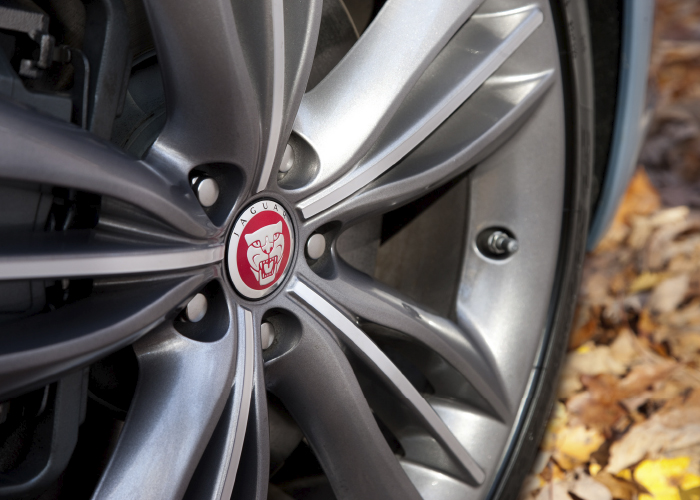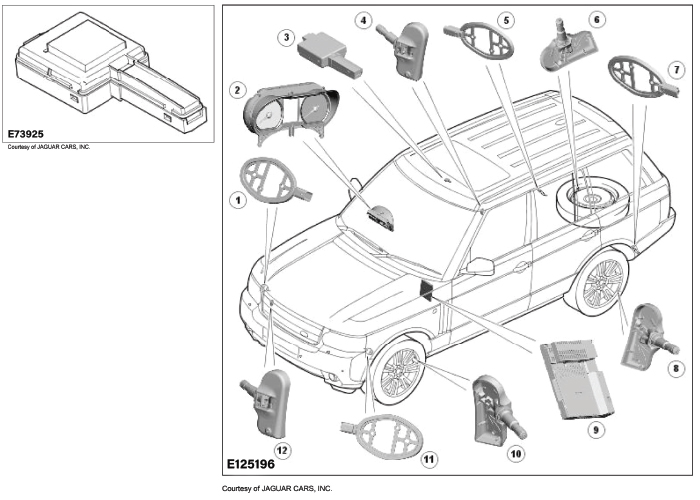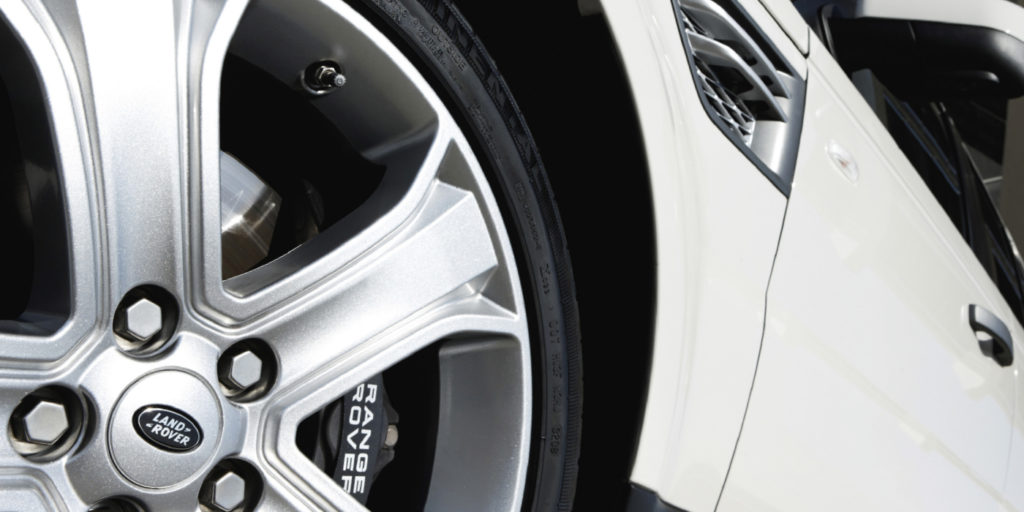In 2008, Jaguar and Land Rover were purchased from Ford by Tata Motors Limited. For the next two years, Jaguar and Land Rover revamped their TPMS systems. The changes overlapped in some cases when a new platform was introduced.
The old system reset and learned sensor IDs in 10 minutes driving above 20 mph. The new system will reset and relearn sensors in 15-18 minutes driving above 15-18 mph, but typically takes only 7 to 8 minutes. The new system has better signal initiators and antennas.
The new system uses signal initiators in all four wheel wells that send a 125 MHz signal to force the sensor in the wheel assembly to transmit. The signal from the sensor is received by an RF receiver that can be mounted in the overhead console or mounted near the shifter.
The system is controlled by a module that can be mounted under the passenger seat or in the center console. It can be called tire pressure sensing module or could be integrated into the Central Junction Box (CJB) on some Land Rovers.

The module will control a specific initiator to transmit a signal that is received by the sensor. The sensor in the tire will transmit its ID, pressure, temperature and other information use 315 MHz or 433 MHz. By initiating one sensor at a time, the receiver knows the position on the vehicle. Jaguar and Land Rover call this Auto-Location.
Temporary spare wheels are not fitted with tire pressure sensors. Some Land Rovers with a full-sized spare will have a sensor but not an initiator. When the spare is fitted, the TPMS system will indicate a fault on the dash.
There is a problem with this setup under some conditions. Low-frequency radiowaves between 125 MHz and 433 MHz are rather noisy with possible interference from items like phone chargers and garage door openers. Depending on the strength and location of the interference, TPMS sensor and initiator signals can be garbled. This is why the OEMs recommend a relearn/reset procedure that needs to be performed at a specific speed range for a set amount of time. The sensor and receiver have to complete several transmissions where the sensor’s ID matches. This eliminates the chance of a sensor ID being saved from a vehicle nearby or the reset process from being aborted prematurely.
The Auto-Location function requires the vehicle to be driven at 16 mph for more for 15 minutes. The procedure is usually completed in seven minutes. If the system detects a deflation, the instrument cluster will display the tire pressure warning indicator and an appropriate message will be displayed in the message center. The initiators will then cause the sensors to transmit at set intervals, which is typically every 60 seconds.
Drive Mode
Every time the vehicle is driven, the tire pressure monitoring system module activates each antenna in turn. The corresponding tire low-pressure sensor detects the signal and responds by modifying the mode status within the transmission.
As each wheel responds to the signal from the tire pressure monitoring system module, it is assigned a position on the vehicle and is monitored for the remainder of that drive cycle in that position.
Each tire low-pressure sensor responds in turn so the tire pressure monitoring system module can establish the tire low-pressure sensor positions at the start of the drive cycle. This process is repeated up to three times, but less if the tire low-pressure sensor positions are already known in the tire pressure monitoring system module.
Park Mode
The TPMS system enters “Parking Mode” when the vehicle speed has been less than 16 mph (25 km/h) for 15 minutes. In parking mode, the tire low-pressure sensors transmit a coded signal to the tire pressure monitoring system module once every 13 hours. If the tire pressure decreases by more than 1 psi, the tire low-pressure sensor will transmit more often as pressure is lost.
Once the vehicle speed increases to 16 mph or more, the TPMS enters Driving Mode. In this mode, the tire pressure sensors will measure the pressure and temperature of each tire every 15 seconds once, then once every 60 seconds. If a change in tire pressure is sensed, the sensors will transmit more often. Pressure and temperature measurements are transmitted periodically to the receiver on the vehicle. To conserve battery power, the sensor transmits at different rates when the wheel is stationary or moving.
Diagnostics
You might be thinking Jaguar and Land Rover systems don’t really need that much diagnostic attention. But, when you get a vehicle in your shop that has the TPMS light on and won’t go out, diagnostic procedures and tools can save a lot of time.

The philosophy of “Test, Don’t Touch” applies to these systems. Before you start replacing sensors, use a TPMS tool to collect information directly from the sensors. The tool will mimic the 125MHz “poke” so the sensor is forced to transmit. Some tools can even retrieve codes to confirm operation of the module, initiators and antenna.














